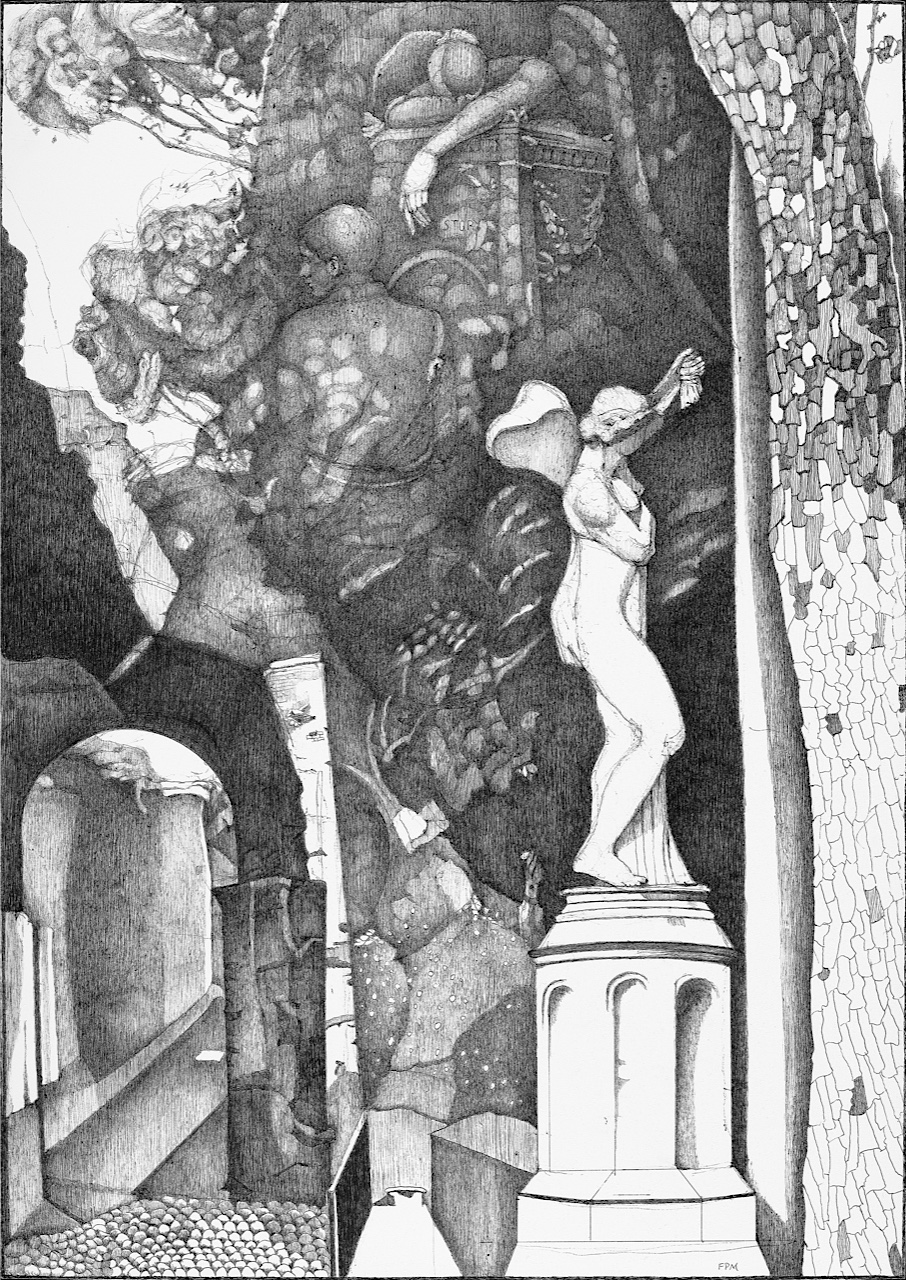 Rome is a city of layers. Almost anywhere one focuses there will be revealed an idea built on an earlier idea which in turn was built on an earlier one.
Rome is a city of layers. Almost anywhere one focuses there will be revealed an idea built on an earlier idea which in turn was built on an earlier one.
I was recently asked to do a drawing for an organization that is documenting expatriates buried in the Acattolico cemetery. The cemetery was previously called Anticattolico or anti- catholic and was a plot of grazing land that hugged the Aurelian wall near the pyramid of Caius Cestius. At one time there were seven pyramids scattered across Rome but during the Renaissance these were dismantled for masonry. The Cestius pyramid remained because it was built into the Aurelian wall that protected Rome; frugal Romans didn’t want to have to rebuild the third century structure. The Cestius pyramid has often been regarded as a bringer of fortune for the city thus superstition prevented its demise.
The architect Francesco Borromini made a drawing to convert the pyramid’s inner chamber into a sanctuary for St. Peter and Paul but this plan was ultimately vetoed by Pope Urban VIII. As the Inquisition lifted at the beginning of the 18th century, Protestants and non-Catholics began to arrive in Rome and subsequently die there. Only Catholics were allowed to be buried within the city walls.
A holdover from the Roman and Etruscan cultures was the idea of Metropolis and Necropolis twin cities side by side, one for the living, one for the dead. The Via Appia, for example, one of the main consular roads outside of the city walls, is still full of lavish family tombs that are constantly being excavated.
Today, the Acattolico cemetery hugs surprisingly the inside of the metropolitan wall, protected by the newly restored pyramid Cestius. Protestants, Greek Orthodox, Jews, Muslims, native communists and beat poets are buried here. Keats, Shelley, Goethe’s only son, Antonio Gramsci and Gregory Corso are among the better known personages.
I chose for my drawing a sculpture of Psyche by an American Richard Saltonstall Greenough completed in 1885 to commemorate the artist’s wife Sarah. The writer Gabrielle Annunzio wrote about the sculpture four years after it was erected in his book Il Piacere; The statue of Psyche at the top of the central pathway had taken on a pale flesh-like tint.
Greenough was a Boston neo-classicist sculptor who moved to Rome in the 1830’s. The idea of Psyche is a Greek reference to the soul and her figure appears in bar reliefs dating back to the 4th Century BC. Her myth comes down to us as a set-in narrative in a book by the Roman writer Apulius called The Golden Ass (2nd Century AD).
Psyche is a fitting theme for mourning a wife as she represents beauty, immortal love and ease from sadness. The story between Psyche and Cupid is a romantic one and features in frescoes commemorating marriages. Most notable is one by Raphael in the Villa Farnesina. Darwin too is referenced as he likened the pupal stage of the butterfly to a death and rebirth similar to Psyche’s. Greenough placed butterfly wings on his sculpture with the same eye markings documented by Darwin in his notebooks.
More topically Keats wrote an Ode to Psyche:
where branched thoughts, now grown with pleasant pain, instead of pines shall murmur in the wind: (lines 50-53)
One is struck most when entering the cemetery by the trees – huge cypress have grown tall and now dwarf the umbrella pines and even the pyramid. The Romans thought of the cypress as a tree that transported the soul to heaven and traditionally they mark burial grounds in Italy.
Leonardo da Vinci in his painting of The Annunciation (now in the Uffizi) celebrated the pines in his homage to the ideas of birth, renewal, death and resurrection. In the branches of my drawing, I hid other touching monuments: Angel of Grief by William Wetmore Story for his wife, and a sculpture of a Bulgarian boy who drowned at age 11. Under the arch in the drawing is the tomb for the poet Perry Bysshe Shelley who also drowned in the Ligurian Sea in 1822. The inscription Greenough chose for his wife; Her loss was that of the keystone of an arch nods a bit to the nearby poet.
Frances Middendorf, Drawing Instuctor